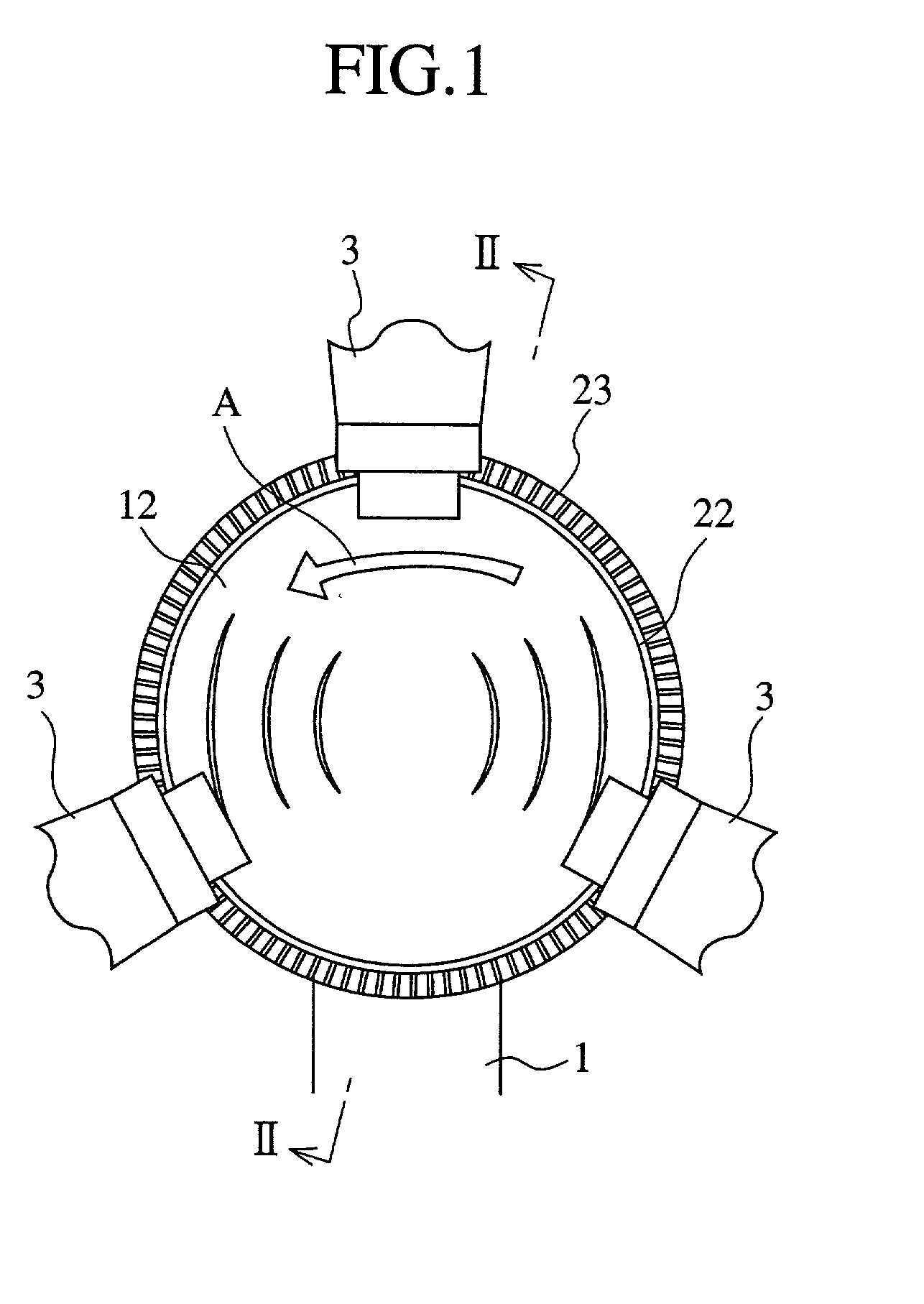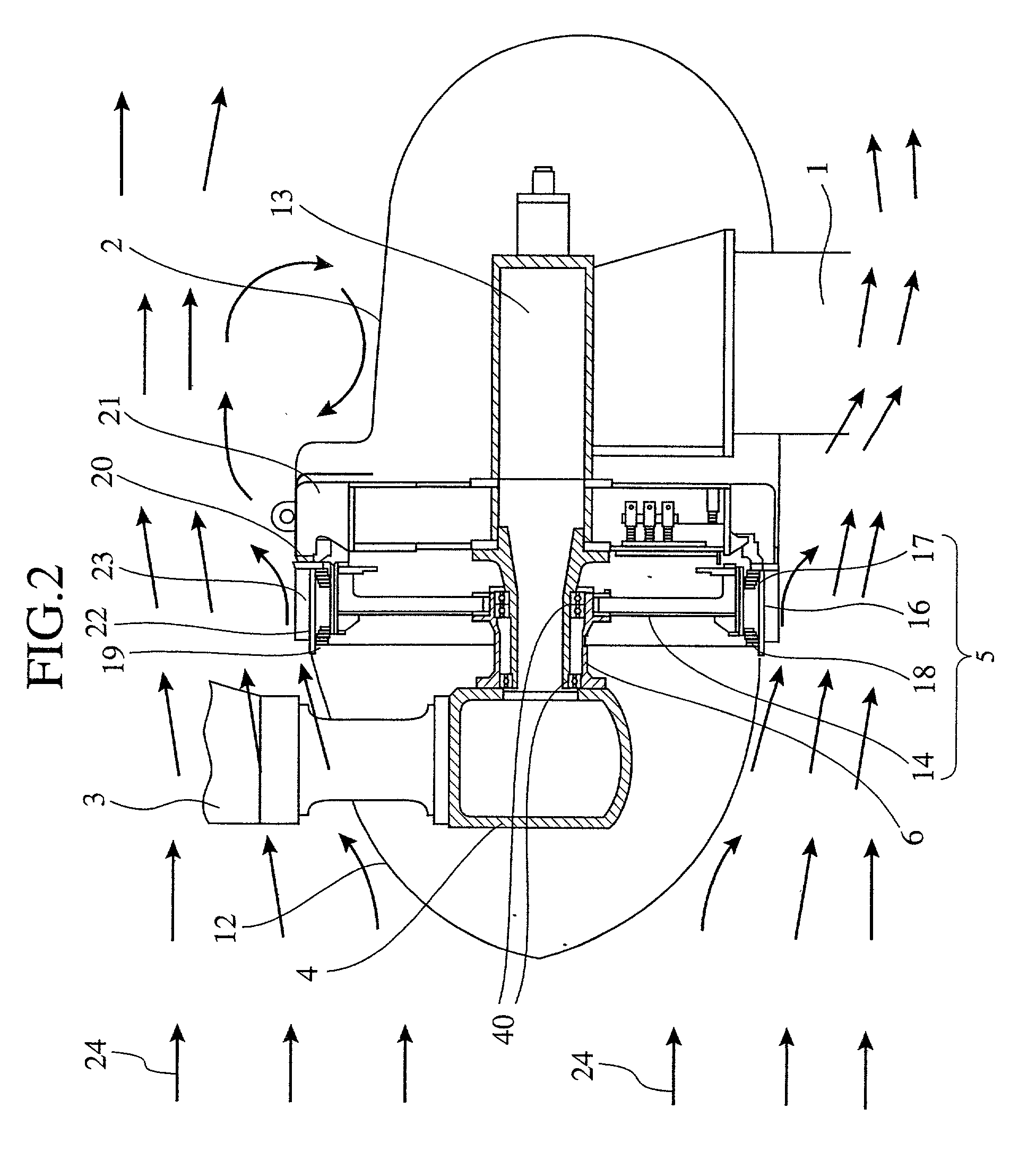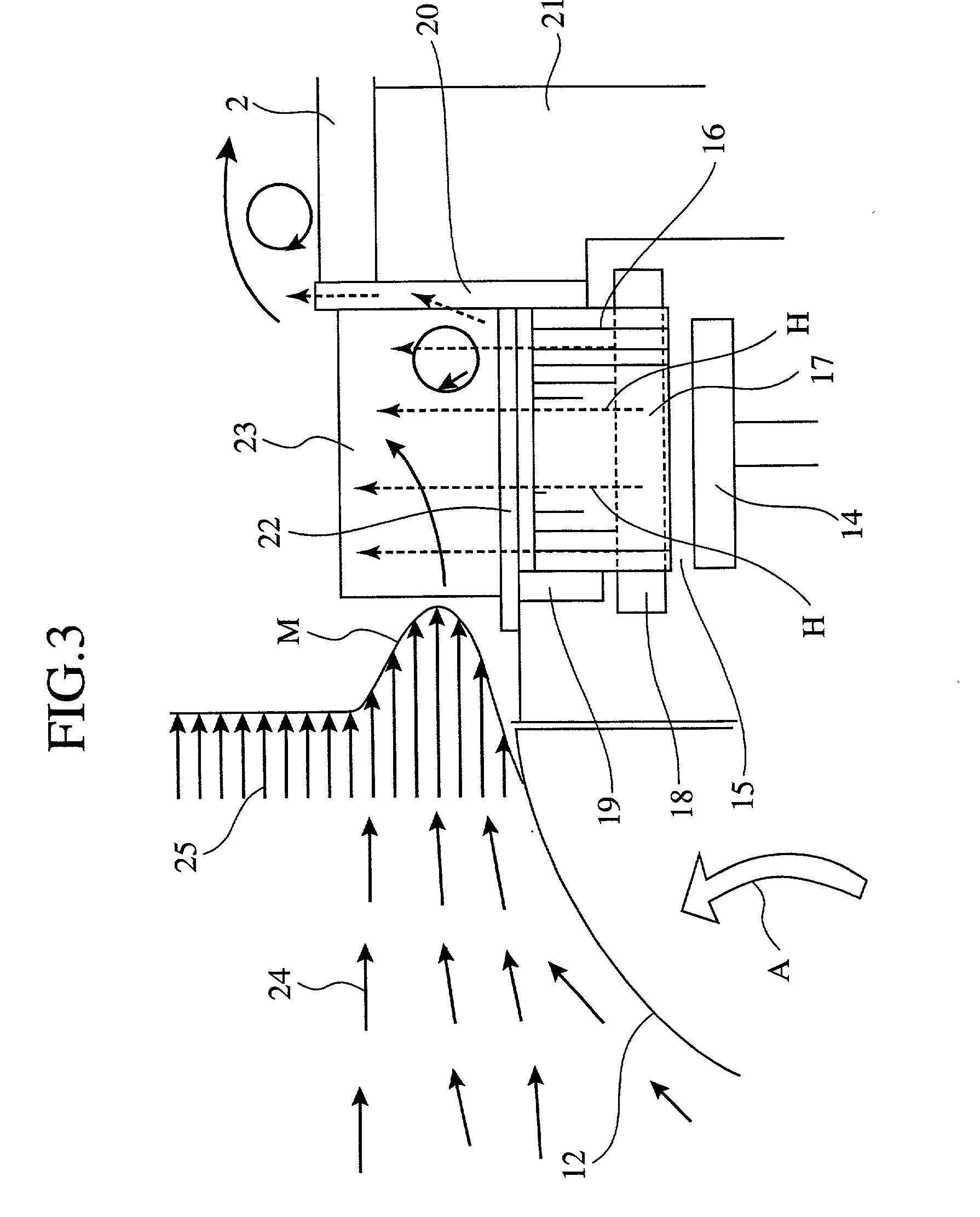Wind power generating device
- Summary
- Abstract
- Description
- Claims
- Application Information
AI Technical Summary
Problems solved by technology
Method used
Image
Examples
first embodiment
[0089] A wind power generating device which differs from that of the prior art, has no step-up gear. However, the present invention can be applied for a wind power generating device with a step-up gear.
[0090] In the first embodiment, as shown in FIG. 1, FIG. 2 and FIG. 3, the hub 4, to which the three blades 3 receiving wind are fixed so as to extend in a radial direction of the hub 3 at equal intervals, is arranged in a spindle-shaped boss 12. The spindle-shaped boss 12 has an air flow direction rectifying function. The hub 4 is fixed to the front portion (or a windward-side portion) of the horizontal shaft 6. A longitudinal direction of the horizontal shaft 6 is controlled by an anemoscope & anemometer (not shown) and a direction control mechanism (not shown) operated with each other to always arrange the hub 4 and the blades 3 on the windward side of the horizontal shaft 6. The horizontal shaft 6 is attached to a fixed shaft 13 through a bearing 40 and rotates freely on the fixe...
embodiment 2
[0100] FIG. 5 is a diagonal view, with portions broken away for clarity, of a plurality of heat dissipating units of a wind power generating device according to a second embodiment of the present invention.
[0101] As shown in FIG. 5, in a wind power generating device according to a second embodiment, a plurality of divided fins (or heat dissipating units), each of which is outwardly protruded in the radial direction of the frame 22 and extends along the axial direction of the frame 22 (or a wind direction), are arranged on the outer peripheral surface of the frame 22 so as to be placed at equal intervals in the circle-circumferential direction of the frame 22, the divided fins are classified into a plurality of groups of divided fins (three groups of divided fins in this embodiment) serially placed in the axial direction of the frame 22, and each pair of divided fins adjacent to each other in the axial direction of the frame 22 are placed at positions different from each other along ...
embodiment 3
[0107] FIG. 6 is a diagonal view, with portions broken away for clarity, of a plurality of heat dissipating units of a wind power generating device according to a third embodiment of the present invention.
[0108] As shown in FIG. 6, in a wind power generating device according to a third embodiment, a plurality of pins are arranged in place of the divided fins 23a, 23b and 23c of the second embodiment. More precisely, a plurality of columnar pins (or heat dissipating units) 26a, 26b and 26c, each of which is outwardly protruded in the radial direction of the frame 22, are arranged on the outer peripheral surface of the frame 22 so as to place the group of pins 26a at the first row from the windward side, to place the group of pins 26b at the second row and to place the group of pins 26c at the third row. Each pair of pins 26a and 26b adjacent to each other in the axial direction of the frame 22 are placed at positions different from each other in the circle-circumferential direction o...
PUM
 Login to view more
Login to view more Abstract
Description
Claims
Application Information
 Login to view more
Login to view more - R&D Engineer
- R&D Manager
- IP Professional
- Industry Leading Data Capabilities
- Powerful AI technology
- Patent DNA Extraction
Browse by: Latest US Patents, China's latest patents, Technical Efficacy Thesaurus, Application Domain, Technology Topic.
© 2024 PatSnap. All rights reserved.Legal|Privacy policy|Modern Slavery Act Transparency Statement|Sitemap



